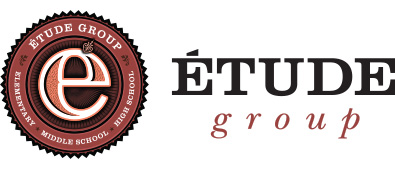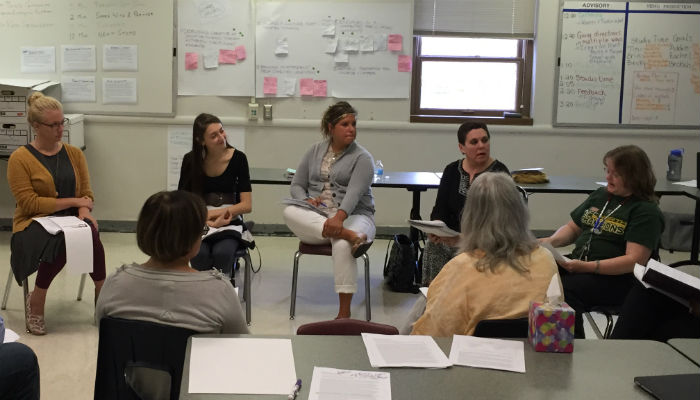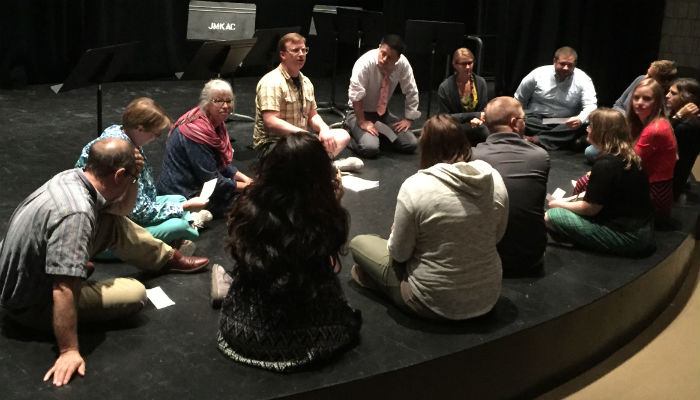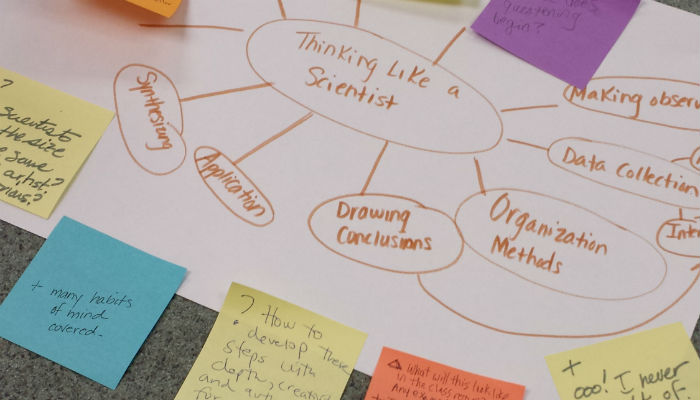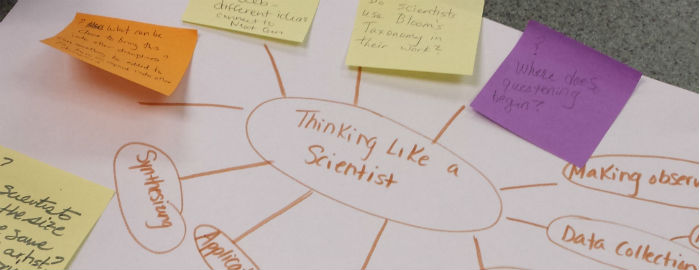
For the most part, this year’s new teachers didn’t know a thing about the Étude schools before they applied to work here. They saw a post for a teaching position at ESAA, Mosaic or IDEAS Academy and decided to check out our website to learn more. “It’s a bit of a drive, but I’m applying,” recalls Becky Knight excitedly. “I was immediately grabbed by the whole vision.” Rod Stoehr also saw the posting, went to the website and thought it sounded like a great fit. There was something about Étude’s unique learning philosophy, positive environment and collaborative culture that told each of them they belonged here.
The sense of belonging was unexpected for Lori Ladiges, ESAA Interventionist. Two years ago, she was teaching at Cardinal Stritch University and came to IDEAS to observe an advisee going for Special Education certification. “I had to come here four times … eventually started to say to myself, ‘You know, I could do this!’” Little did she know she would be teaching here herself!
For Bianca Bielke, Grade 1, the choice of where to apply was quite intentional. New to the area, she wanted to find a school that matched her own teaching philosophy: collaborative, student centered, and project based, all of which she found at ESAA. What she wasn’t expecting was how applicable the principles and values of learning are to each grade level, from hers on to high school. It’s “so beneficial for all different levels to come together and learn about strategies and methods [of teaching] and learn about how they are being applied in older grades and how skills build.” This focus on collaboration is one of the tenets of the Habits of Professionalism and Learning that are practiced by teachers and students alike.
The teachers were immersed in their orientation all week. They met with veteran teachers of all disciplines and have experienced first-hand the Habits of Mind and Culture of Thinking that all Étude schools embody for students. They learned an incredible amount about what it means to teach at ESAA, Mosaic or IDEAS. “The sense of community is so much different than what I am used to,” says Timi Parker, who will be teaching Science at IDEAS. “It seems like it’s being exemplified on all levels. It’s refreshing.” Parker is looking forward to being in an environment that allows her to grow professionally in an organic way. “This seems like a place you can spread your wings. [There are requirements of] a, b, c, d but you are allowed to go outside those boundaries and explore different ideas that you wouldn’t to be able to explore anywhere else.”
This sense of connectedness between the students, teachers and the work manifests the intentional school culture and positive environment that encourages creativity. It’s the sort of environment that many of the teachers said they would have appreciated as a young learner. Erin Thomas got good grades throughout school but was easily bored because she “got” concepts quickly. “I was the kid staring out the window doodling in my notebook.” She would have benefitted from project-based learning and a “school culture that promotes creativity and collaboration and positive environment...however fast I got done with whatever, when the math clicked, I have all this extra time to do something cool.” Gauger echoed similar sentiments. She also got good grades and could “do school” but also found herself bored and not engaged. “I was the student that was obnoxiously reading in class and not listening,” she laughed. “I could have done better in a more dynamic environment where your learning is actively happening, because the only way I felt that was when I was in my head, in my book.” In an active learning environment, her students will instead elicit concepts through projects that put their own creativity and wonder at the center of their learning.
Student-centered learning means that the learning process is as individual as the students themselves. As a kinetic learner, Bianca appreciates that all types of learning are supported. “A big focus of our schools is to nurture all aspects of the brain and I think that’s great for kids because they can discover how brains work and nurture that aspect of their brains earlier on.” Students are able to self-direct to learn how to think through material and concepts in a way that is unique for them, which sets the pace for active, engaged learning in the classroom; which will endure for the rest of their lives.
Please join us in welcoming the new teachers of the 2015-16 school year!
Bianca Beilke - ESAA Grade 1
Ashley Gauger - ESAA Grades 4-5
Lori Ladiges - ESAA Interventionist
Becky Knight – IDEAS Math/Physics
Timi Parker – IDEAS Science
Rod Stoehr - Mosaic/IDEAS Social Worker
Erin Thomas – IDEAS Math
Adam Laborde - Mosaic Physical Education
Kathleen Evenson - ESAA Grades 4-5
Pat McCarthy - ESAA Special Education
